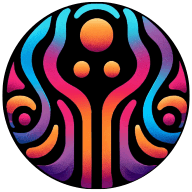Embark on a fascinating journey through time as we explore the history of psychedelic use. From ancient rituals to modern therapeutic applications, these mind-altering substances have played a significant role in human culture. This blog post will delve into the origins, cultural significance, and the evolving perception of psychedelic substances throughout history.
Ancient Beginnings: Psychedelics in Early Civilizations
Psychedelics have been part of human culture for thousands of years. Archaeological evidence suggests that ancient societies used these substances for religious and healing purposes. In the prehistoric Sahara, rock art dating back to 7000 BC depicts mushrooms with psychedelic properties. Similarly, in Central America, the use of psilocybin mushrooms was prevalent among indigenous cultures.
In South America, the indigenous tribes have a long history of using Ayahuasca, a potent brew with powerful hallucinogenic properties. This brew, made from the Banisteriopsis caapi vine and other plants, played a crucial role in their spiritual and medicinal practices.
Moving to the other side of the world, in ancient India, the Rigveda, one of the oldest known texts, mentions a mysterious substance called Soma. Although the exact identity of Soma remains a topic of debate, many scholars believe it had psychedelic properties.
Middle Ages to Early Modern Period: The Witch Trials and Ergot
The Middle Ages saw a shift in the perception of psychedelics, particularly in Europe. The use of these substances became associated with witchcraft and sorcery, leading to widespread fear and persecution.
One of the most infamous cases involves the use of ergot, a fungus that grows on rye and contains lysergic acid, the precursor to LSD. Ergotism, the effect of long-term ergot poisoning, was common in Europe during the Middle Ages. Symptoms included hallucinations and irrational behavior, which were often attributed to witchcraft.
In the early modern period, the witch trials in Salem are believed to have been triggered by ergot poisoning. The hallucinations and strange behavior exhibited by the accused were consistent with the effects of this fungus.
19th Century to Mid-20th Century: Scientific Discovery and Early Research
The 19th and early 20th centuries marked a significant period in the history of psychedelic use. During this time, scientists began to isolate and study the compounds responsible for the mind-altering effects of these substances.
In the 1930s, Swiss chemist Albert Hofmann synthesized LSD for the first time while studying ergot. However, it was not until 1943 that he accidentally discovered its psychedelic properties. This discovery marked a turning point in the scientific understanding of psychedelics.
Research into psychedelics flourished in the 1950s and 1960s. Scientists explored their potential therapeutic uses, particularly in the treatment of mental health disorders. However, the growing recreational use and the associated counterculture movement led to increasing controversy.
Late 20th Century: Prohibition and Stigmatization
The late 20th century saw a significant shift in the perception of psychedelics. The widespread recreational use and the association with the counterculture movement led to increasing concerns about their safety and societal impact.
In 1970, the United States classified psychedelics as Schedule I drugs under the Controlled Substances Act. This classification, which includes substances with high potential for abuse and no accepted medical use, effectively halted research into their therapeutic potential.
The prohibition of psychedelics was not limited to the United States. Many other countries followed suit, leading to a global stigmatization of these substances. This period marked a low point in the history of psychedelic use.
21st Century: Renaissance in Psychedelic Research
The 21st century has seen a resurgence in interest in psychedelics, both from a scientific and cultural perspective. Researchers are once again exploring their potential therapeutic uses, particularly in the treatment of mental health disorders.
Clinical trials have shown promising results in the use of substances like psilocybin, the active ingredient in magic mushrooms, for the treatment of depression and anxiety. Similarly, MDMA, commonly known as ecstasy, is being studied for its potential in treating post-traumatic stress disorder.
This renewed interest in psychedelics has also led to changes in legislation. In the United States, several cities and states have decriminalized the use of certain psychedelics. While the future of psychedelic use remains uncertain, the current trend suggests a shift towards acceptance and understanding.
The Future of Psychedelics: Potential and Challenges
As we look to the future, the potential of psychedelics is clear. However, significant challenges remain. The stigma associated with their use continues to be a barrier to research and acceptance.
Moreover, the legal status of these substances in many countries complicates their study and therapeutic use. Despite these challenges, the potential benefits of psychedelics, particularly in the field of mental health, are too significant to ignore.
The history of psychedelic use is a testament to the complex relationship between humans and these powerful substances. As we continue to explore their potential, it is crucial to learn from the past and approach their use with respect and caution.
Reflecting on the Psychedelic Journey
The history of psychedelic use is a fascinating journey that reflects our evolving understanding of these powerful substances. From ancient rituals to modern therapeutic applications, psychedelics have played a significant role in human culture. As we continue to explore their potential, it is crucial to approach their use with respect and caution, learning from our past while looking towards the future.

